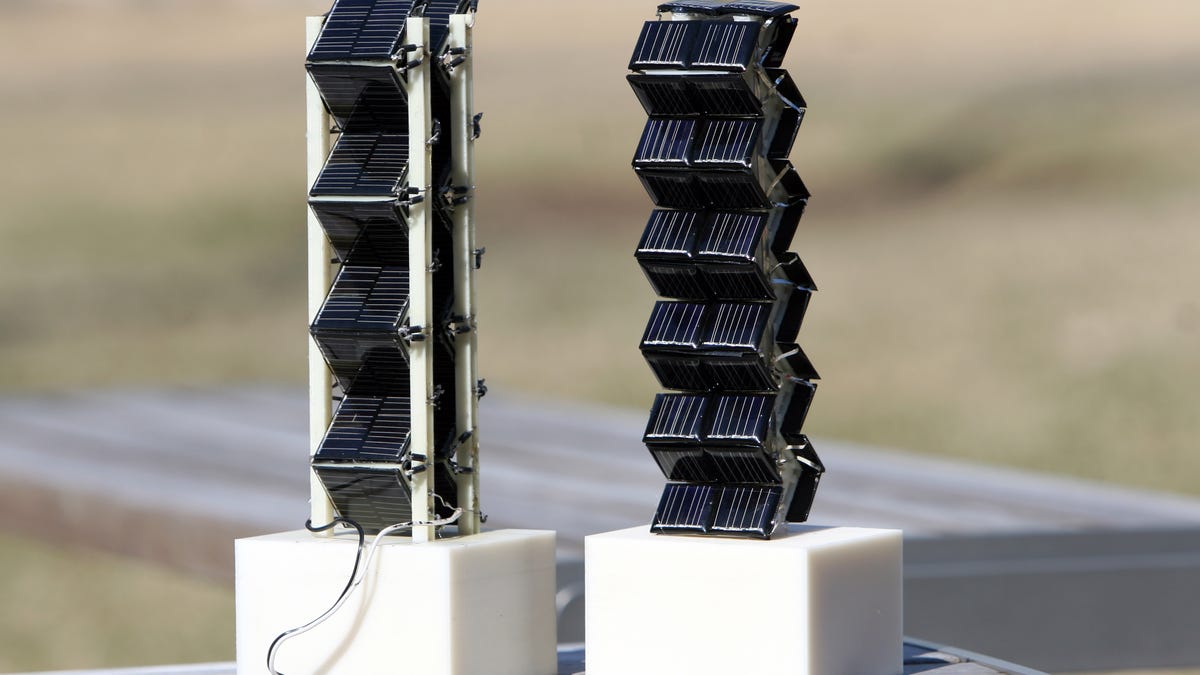Accordion-shaped solar tower captures more light
Because the cost of solar panels has dropped so much, designing three-dimensional structures to take in more light intake and boost power output now makes sense, according to researchers at MIT.

To get more light in a tight spot, solar panels should be three dimensional, according to a study detailed today.
Researchers at the Massachusetts Institute of Technology published a paper in the journal Energy and Environmental Science this week which found that building a solar array with panels at different angles can significantly improve performance. The best improvements were in cloudy conditions, in winter months, and in locations far from the equator.
Using simulations and small test structures, the group found power increased between two to 20 times compared to a set of flat panels. In initial tests, though, it found an accordion-like structure made up of multiple cubes stacked so that the sides face different directions appears to get better light without adding dramatically higher costs.
Studying the placement of solar panels to optimize light makes more sense now because the cost of solar modules, or panels, has dropped dramatically in the past few years.
"Even 10 years ago, this idea wouldn't have been economically justified because the modules cost so much," said MIT researcher Jeffrey Grossman in a statement. "(Now) the cost for silicon cells is a fraction of the total cost, a trend that will continue downward in the near future."
For utility-scale solar farms, solar panels are equipped with trackers that change panels' positions over the course of the day. Since they add significantly to the cost and complexity of installation, residential or even commercial solar arrays don't typically use trackers.
But making solar structures with panels at different angles can work in places where space is at a premium, such as cities, according to MIT.
Last year, a middle school student won a Young Natural Award for an essay and science project that found that placing solar panels like tree branches boosted their performance. Basic flaws in the project, which brought a deluge of media coverage, later came to light.
Grossman said the MIT group is different from previous attempts to optimize light through architecture because it has taken a systematic approach that will let designs predict power increases with 3-D shapes. Its next step is to test several solar structures in a group to measure the effects of shading.

